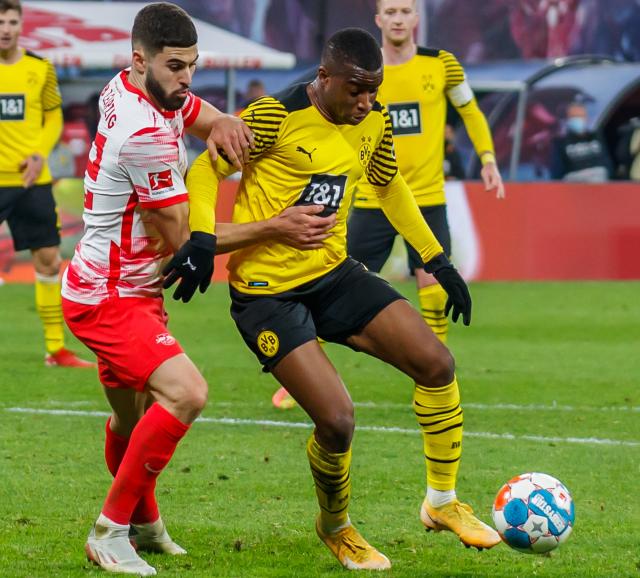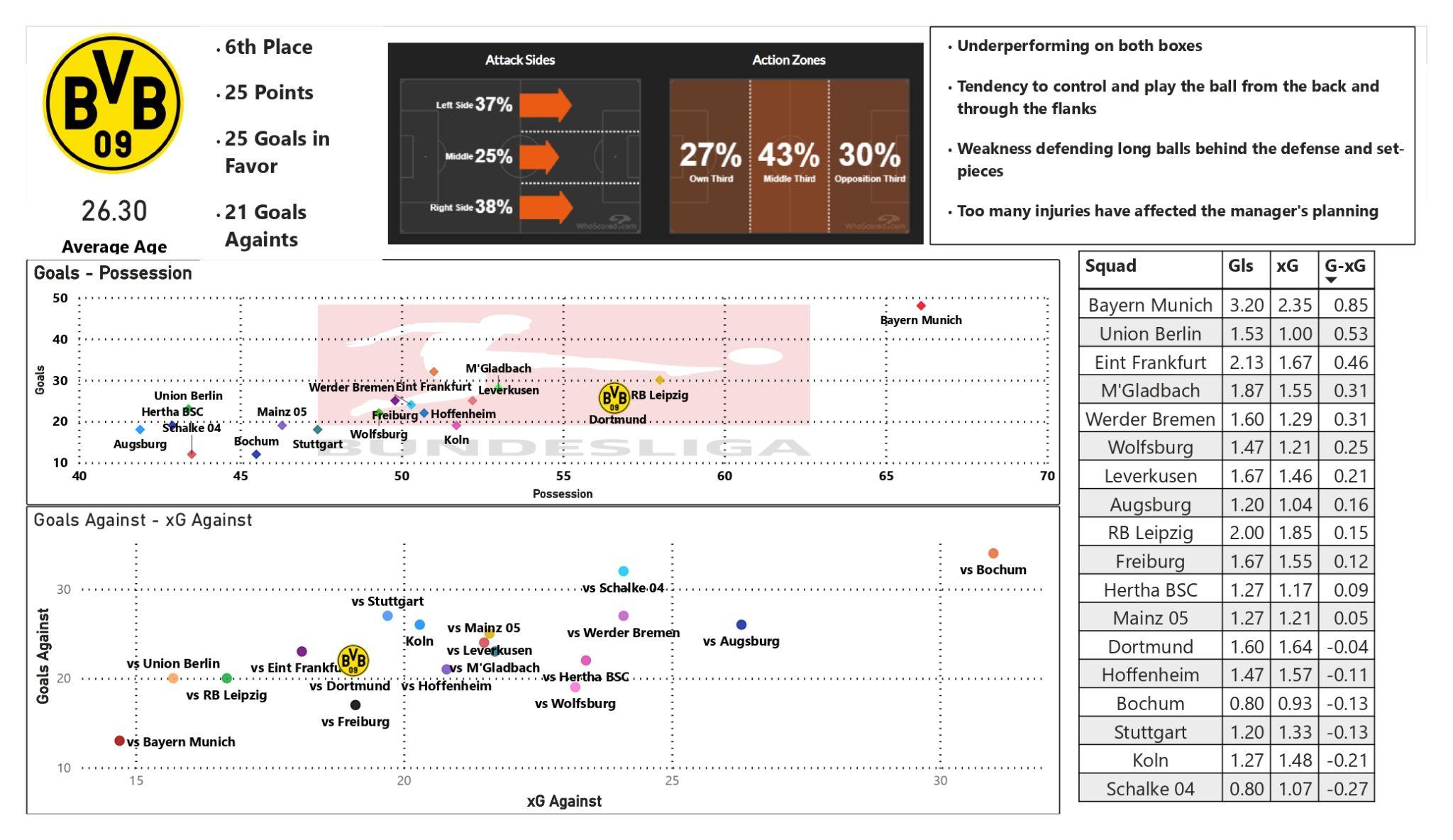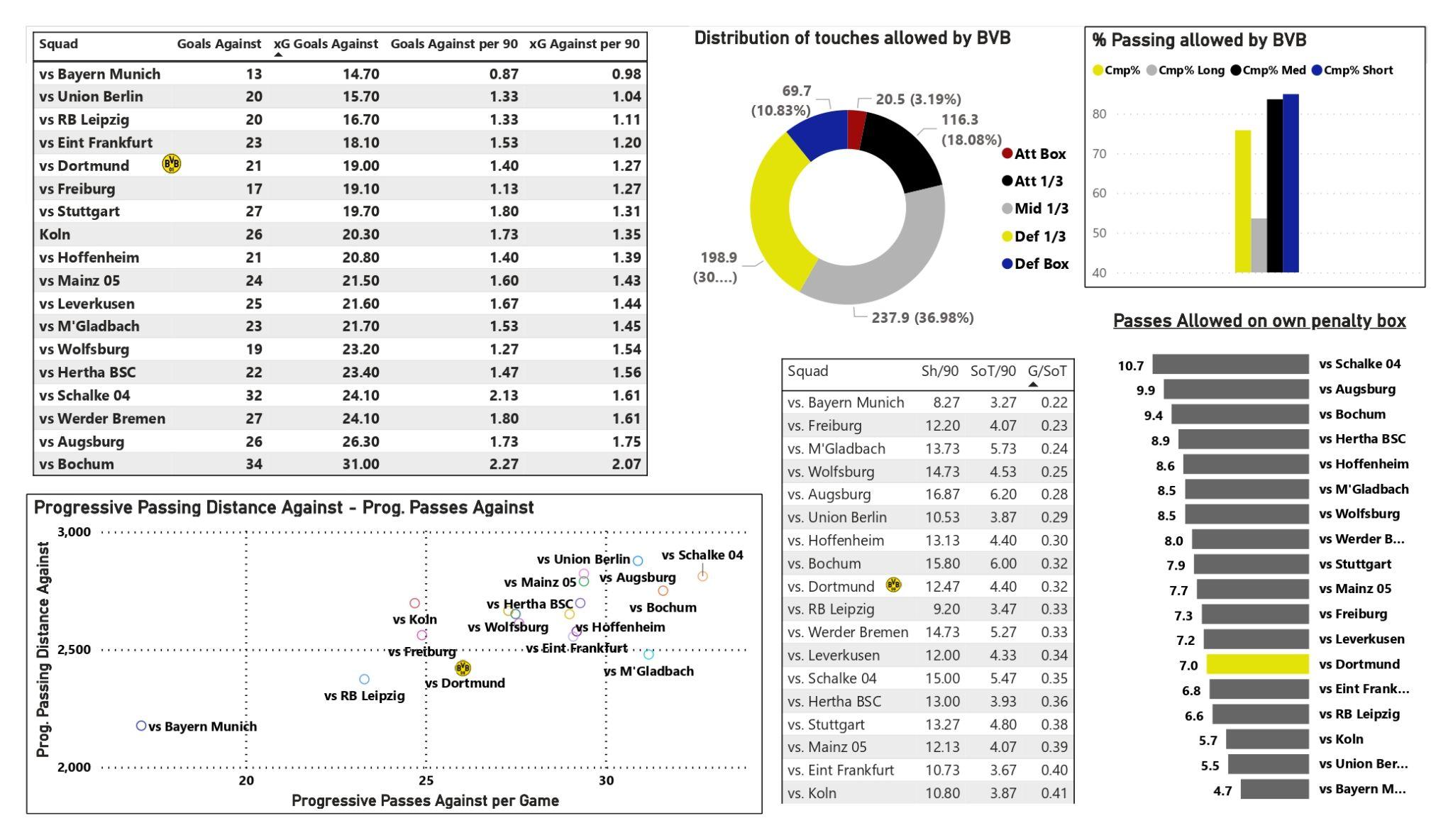Deconstructing BVB’s first half of the season
Borussia Dortmund currently sit 6th in the Bundesliga and are 10 points behind Bayern. Having lost six our of 15 games and with just a +4 goal difference, BVB have performed way below the expectations. But what does Dortmund’s stats say about their performances?

| Josko Gvardiol and Youssoufa Moukoko. | Photo: Steffen Prößdorf, CC BY-SA 4.0 |
It is mandatory to remember the significant amount of injuries the Black and Yellows have had this season.
BVB coach Edin Terzic has been forced to adapt his tactics and players’ roles to cope with it; Sebastian Haller’s diagnosis was the most brutal blow, but Marco Reus’ ankle and the recurring injuries to other starting and rotation players have hindered the coach’s tactics heavily.
Quick summary

BVB prioritize ball control, ranking 3rd in ball possession in the Bundesliga and trying to always get a clean build-up to then exploit their speed through the wings to reach crossing positions.
As Dortmund usually have control of the ball, most of the opponents defend against them with a middle-to-low block.
Looking at the image above, it’s noticeable how the BVB have underperformed in both boxes.
They hold a negative G-xG difference, ranking in the low places in this stat; the Black and Yellows have also conceded more goals than they should, even despite having 7 clean sheets in 15 matches, although they have always achieved this feat against lower-placed teams.
Compared to the clubs placed in the top five, BVB have been good enough defensively, but they have heavily underperformed offensively and that is costing them.
Offensive Phase

As mentioned before, BVB try to control the match through the ball and an organized build-up.
They have a very balanced and successful passing distribution, trying to move the ball around fluidly to shift the defensive block toward one side to quickly attack the weak side.
This is tangible, as Dortmund are not only the team that complete the most long passes in the whole league, but they also switch the play more than any other team.
The quality of their players allows Terzic and BVB to play this way; the combinations between Hummels, Süle, and Schlotterbeck with Özcan, Dahoud, Brandt, and Bellingham make them have the third-highest passing accuracy in the league.
As BVB try to summit their opponents with the ball, most of the rivals elect to mix short stints of high-press with a lower block to limit the Yellows’ inside passing lanes and space to run behind.
We can notice this by looking at the good amount of passes in the final third they make per game, but even more so when we see who is the player that makes the most passes into the final third per match: Nico Schlotterbeck.
Schlotterbeck’s good vision and left foot allow him to break the lines either with a pass or progressing with the dribble and pin the defense, he usually connects with the left-back or left-winger, and sometimes with one of the midfielders; he’s also quite accurate with long passes behind the defensive line.
Dortmund are the team with the seventh-most crosses from open play and the one with the most corner kicks per match; denoting the depth they reach through their flanks.
BVB also rank third when it comes to shot and goal creation.
Those are not champions-like numbers, but they’re good enough to point out BVB’s big deficiency in finishing their goal-scoring opportunities.
Reus and Haller’s absences are particularly hurtful in this area, Brandt is not as clinical as the captain and Anthony Modeste has not reached the level expected and has even slipped behind Youssoufa Moukoko in the pecking order.
Lack of efficiency

Dortmund produce a good Shots on Goal vs Shots-per-game ratio while being the team with the third-most shots in the Bundesliga. However, they still don’t score enough goals.
They currently sit 7th in goals scored and rank very low in goals per shot on target.
To take things into perspective, Youssoufa Moukoko has been the most efficient and key offensive player; the 18-year-old, who was relegated to the bench during the first games of the season, is the leading goalscorer and also leads in assists, followed by Julian Brandt in both stats.
Moukoko also ranks 25th in goal-creating actions P90 among players with at least 6 matches played.
Julian Brandt is 15th and Doneyll Malen is 25th in shooting actions Per 90'.
Dortmund have just 3 players in the top 25 in both of those registers; Bayern, RB Leipzig, Eintracht Frankfurt, and even Gladbach have far more players in both rankings.
The lack of a key offensive player that can carry the weight of the attacks has really hurt the BVB.
Defensive phase

Edin Terzic’s squad try to be very intense on defense, forcing a lot of duels to recover the ball by taking advantage of the players’ dominance in them.
The BVB are the club with the seventh-most duels won and Jude Bellingham is the best player in this stat by a mile; The Englishman leads the league in duels won and also in tackling percentage among midfielders.
If we take a look at the profile of Dortmund’s newest additions for the center of the defense, Niklas Süle and Nico Schlotterbeck, both dominate the defensive duels all-around.
The Yellows lead the Bundesliga in tackles, tackles in the final third, and middle third; they also recover the ball quite often, with more than 50% of the recoveries coming through interceptions or tackles.
Despite the good numbers, Dortmund have received more goals than expected even with the low number of passes they allow in their own third.
Opponents have been able to create danger and goals from plays that should have been controlled by the BVB or through defensive errors.

They allow 0.32 goals per shot-on-goal in the 20,5 touches they allow in their own box each match, meaning most of the plays they receive shots from come from direct open plays whether in counterattacks or defensive-attacking transitions.
If we translate BVB’s pressing to numbers, Edin Terzic’s squad allow one of the highest number of passes in the opponent’s own area, then drop to the middle of the table in passes allowed in the opponent’s build-up third, and get into the top-4 in fewer passes allowed in the middle and own third.
This comes as Terzic quickly realized the team’s weakness when pressing high and decided to use a middle block to minimize the risks, as they have been struggling with long passes behind the defense and through balls. Not much of a surprise that the German National team suffered from the same thing.
A bad team that is lethal on both boxes can overperform and be much more successful than a great team that lacks determination when arriving at the boxes.
With the title seeming long gone, Dortmund need to improve for the second part of the season to secure a Champions League spot.
